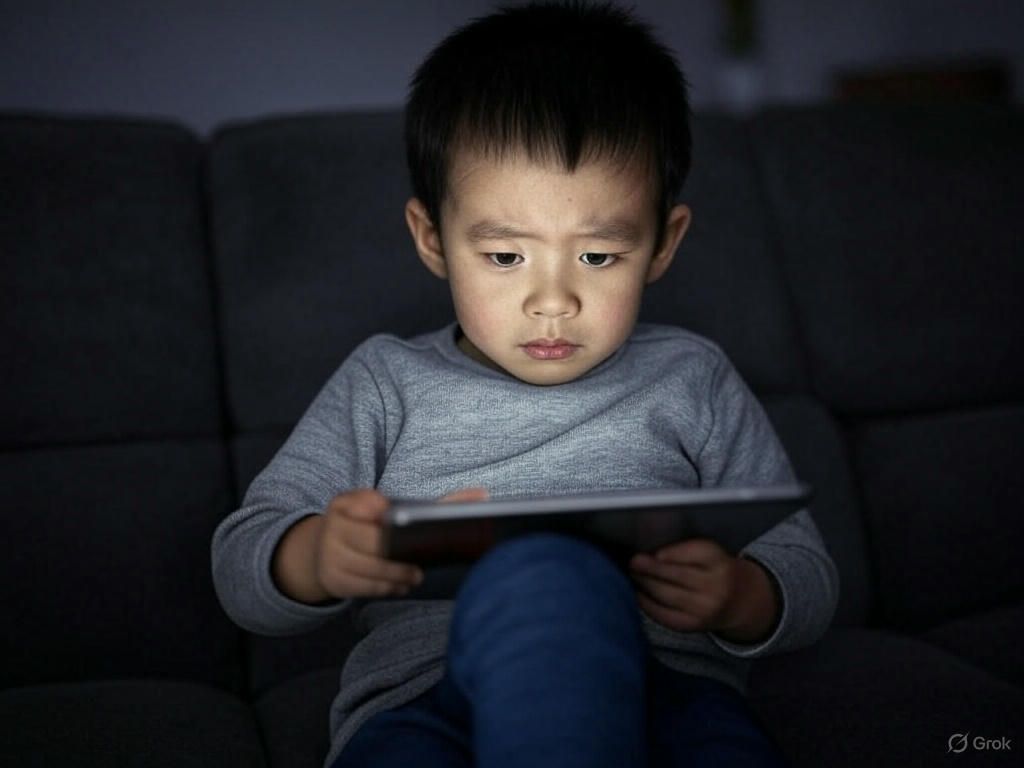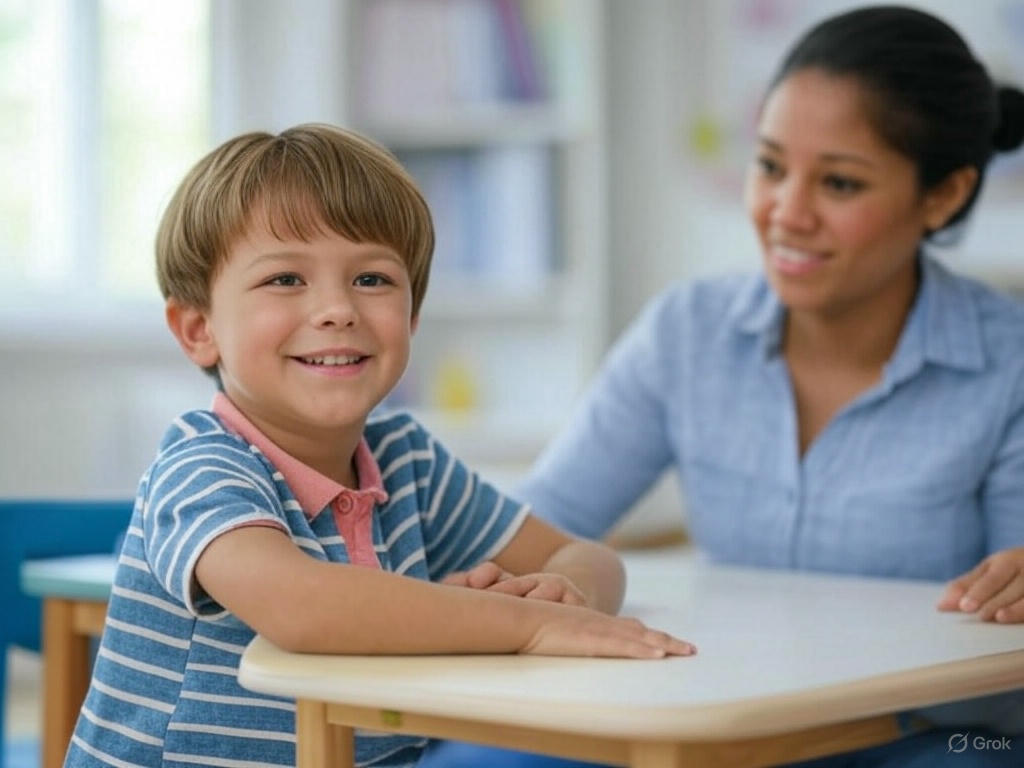Early Signs of ADHD in Kids: A Comprehensive Guide
Introduction to ADHD in Children
Attention Deficit Hyperactivity Disorder (ADHD) is one of the most common neurodevelopmental disorders affecting children worldwide. Understanding the early signs of ADHD in kids is crucial for parents, teachers, and caregivers to provide timely support and intervention. ADHD often manifests in early childhood, but its symptoms can sometimes be mistaken for typical childhood behavior.
ADHD is characterized by a persistent pattern of inattention, hyperactivity, and impulsivity that interferes with a child’s daily functioning. According to the Centers for Disease Control and Prevention (CDC), approximately 6.1 million children in the United States have been diagnosed with ADHD. Early recognition of these symptoms can make a significant difference in a child’s academic, social, and emotional development.
In this article, we’ll explore the early signs of ADHD in kids, including attention difficulties, hyperactivity, impulsivity, and more. We’ll also discuss the importance of early diagnosis and intervention to help children thrive.
By understanding these signs, parents and educators can take proactive steps to support children with ADHD and ensure they receive the resources they need to succeed.
Recognizing Attention Difficulties
One of the hallmark early signs of ADHD in kids is difficulty maintaining attention. Children with ADHD often struggle to focus on tasks, especially those that require sustained mental effort, such as homework or reading. They may appear easily distracted by external stimuli or their own thoughts.
For example, a child might start a task but quickly lose interest and move on to something else. This can lead to incomplete assignments and frustration for both the child and their caregivers. Teachers may notice that the child frequently daydreams or seems “off-task” during lessons.
It’s important to differentiate between occasional lapses in attention, which are normal for all children, and persistent patterns that interfere with daily life. If attention difficulties are consistent and impact a child’s ability to learn or interact with others, it could be a sign of ADHD.
Parents and educators should monitor these behaviors and consider seeking professional advice if they suspect ADHD. Early intervention can help address attention difficulties and improve a child’s overall functioning.
Hyperactivity and Restlessness
Hyperactivity is another common early sign of ADHD in kids. Children with ADHD often exhibit excessive energy and have difficulty sitting still. They may fidget, squirm, or leave their seat during activities that require them to remain seated.
For instance, a child might constantly tap their foot, play with objects on their desk, or get up and walk around the classroom without permission. This restlessness can be disruptive in structured environments like schools, where sitting still is often expected.
Hyperactivity isn’t limited to physical movement; it can also manifest as excessive talking or difficulty engaging in quiet activities. A child might interrupt others, blurt out answers, or struggle to wait their turn during group discussions.
Recognizing hyperactivity early can help parents and teachers implement strategies to channel this energy in positive ways, such as through physical activities or hands-on learning experiences.
Impulsivity in Everyday Behavior
Impulsivity is a key component of ADHD and one of the most noticeable early signs of ADHD in kids. Impulsive behavior can manifest in various ways, such as acting without thinking, interrupting conversations, or making hasty decisions.
For example, a child might grab a toy from another child without asking or shout out an answer in class without raising their hand. These behaviors can lead to conflicts with peers and challenges in social settings.
Impulsivity can also pose safety risks. A child with ADHD might run into the street without looking or climb on furniture without considering the potential consequences. These actions highlight the importance of close supervision and guidance.
Parents and caregivers can help manage impulsivity by setting clear boundaries, using positive reinforcement, and teaching problem-solving skills. Professional support may also be beneficial in addressing these behaviors.
Struggles with Following Instructions
Children with ADHD often have difficulty following instructions, which is another significant early sign of ADHD in kids. They may forget steps, misunderstand directions, or fail to complete tasks as instructed.
For instance, a teacher might ask a child to complete a three-step task, but the child only completes the first step before becoming distracted. This can lead to frustration for both the child and the adult providing the instructions.
These struggles are not due to a lack of understanding or intelligence but rather the child’s difficulty in processing and retaining information. ADHD affects the brain’s executive functioning, which is responsible for planning, organizing, and executing tasks.
Parents and educators can support children by breaking tasks into smaller, manageable steps and providing clear, concise instructions. Visual aids and reminders can also be helpful in keeping children on track.
Difficulty in Maintaining Focus
Maintaining focus is a challenge for many children with ADHD. This difficulty is one of the most common early signs of ADHD in kids and can impact various aspects of their lives, from academics to social interactions.
For example, a child might struggle to complete a puzzle or listen to a story without becoming distracted. They may frequently shift their attention from one activity to another, leaving tasks unfinished.
This lack of focus can be particularly evident in school settings, where children are expected to concentrate for extended periods. Teachers may notice that the child has trouble staying engaged during lessons or following along with group activities.
Parents and educators can help by creating structured environments with minimal distractions. Providing regular breaks and using tools like timers can also support children in maintaining focus.
Emotional Outbursts and Sensitivity
Emotional regulation is another area where children with ADHD may struggle. Emotional outbursts and heightened sensitivity are common early signs of ADHD in kids. These children may have difficulty managing their emotions and may overreact to minor frustrations.
For instance, a child might cry or become angry when asked to stop playing a game or when they lose a turn. These reactions can be challenging for parents and teachers to manage, especially in group settings.
Heightened sensitivity can also make children with ADHD more prone to anxiety or feelings of rejection. They may take criticism personally or feel overwhelmed in social situations.
Helping children develop emotional regulation skills is essential. Techniques such as deep breathing, mindfulness, and positive reinforcement can be effective in managing emotional outbursts.
Challenges in Social Interactions
Social interactions can be particularly challenging for children with ADHD. Difficulty reading social cues, interrupting conversations, and impulsive behavior are common early signs of ADHD in kids that can affect their relationships with peers.
For example, a child might dominate conversations, fail to take turns, or struggle to share toys. These behaviors can lead to misunderstandings and conflicts with other children.
Children with ADHD may also have difficulty forming and maintaining friendships. They might feel excluded or misunderstood, which can impact their self-esteem and emotional well-being.
Parents and educators can support social development by teaching social skills, encouraging cooperative play, and providing opportunities for positive peer interactions.
Early Academic Struggles
Academic challenges are often among the first early signs of ADHD in kids that parents and teachers notice. Difficulty focusing, following instructions, and completing tasks can impact a child’s performance in school.
For instance, a child might struggle with reading comprehension, forget to turn in homework, or have trouble staying organized. These challenges can lead to frustration and a negative attitude toward learning.
It’s important to recognize that these struggles are not a reflection of the child’s intelligence or potential. With the right support, children with ADHD can excel academically.
Early intervention, such as individualized education plans (IEPs) and accommodations like extra time on tests, can help children overcome these challenges and succeed in school.
Importance of Early Diagnosis and Intervention
Recognizing the early signs of ADHD in kids and seeking a diagnosis is crucial for providing effective support. Early intervention can help children develop coping strategies, improve their academic performance, and enhance their social skills.
According to research, children who receive early intervention for ADHD are more likely to achieve positive outcomes in adulthood. This includes better educational attainment, improved relationships, and greater emotional well-being.
Parents and caregivers should consult a healthcare professional if they suspect ADHD. A comprehensive evaluation can help determine whether a child has ADHD and identify the best course of action.
Organizations like Prashast offer resources for disability screening and inclusive education, making it easier for families to access the support they need.
Conclusion
Understanding the early signs of ADHD in kids is essential for parents, teachers, and caregivers. By recognizing attention difficulties, hyperactivity, impulsivity, and other symptoms, adults can provide the support children need to thrive.
Early diagnosis and intervention play a critical role in helping children with ADHD succeed academically, socially, and emotionally. With the right strategies and resources, children with ADHD can overcome challenges and reach their full potential.
If you suspect your child may have ADHD, don’t hesitate to seek professional advice. Remember, early action can make all the difference in a child’s life.
FAQ: Early Signs of ADHD in Kids
- What are the most common early signs of ADHD in kids?
- The most common early signs of ADHD in kids include attention difficulties, hyperactivity, impulsivity, struggles with following instructions, and emotional outbursts.
- At what age can ADHD be diagnosed?
- ADHD can often be diagnosed as early as 4-5 years old, but symptoms may become more noticeable once a child starts school.
- How can parents support a child showing early signs of ADHD?
- Parents can support their child by creating structured routines, using positive reinforcement, and seeking professional help for diagnosis and intervention.
- Where can I find resources for ADHD diagnosis and support?
- Organizations like Prashast provide resources for disability screening and inclusive education to support children with ADHD.



